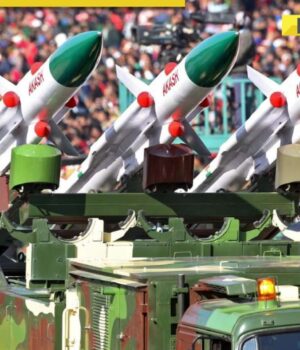Source : DNA INDIA NEWS
India’s Operation Sindoor: Without crossing the Line of Control or international boundary, Indian forces struck terrorist infrastructure and eliminated multiple threats with self-made military weapons that are designed for any kind of war situation- drone, layered air defence, or electronic warfare.
Operation Sindoor : How did IAF air defence system destroyed Pakistani missiles?
India’s Operation Sindoor is a stark reminder of the country’s military prowess with modern and hi-tech designed defence systems that can beat any army, neutralise terrorists and the most powerful weaponry systems of the enemy. Under Operation Sindoor, India’s response was deliberate, precise, and strategic. Without crossing the Line of Control or international boundary, Indian forces struck terrorist infrastructure and eliminated multiple threats with self-made military weapons that are designed for any kind of war situation- drone warfare, layered air defence, or electronic warfare.
India’s Air Defence capabilities
Pakistan had various Indian military targets in Northern and Western India on its radar on the night of 07-08 May, these included areas in Jammu and Kashmir, Punjab and Rajasthan. It planned to launch drones and missiles on Jammu, Srinagar, Chandigarh, Bhuj, and more. India in its defence used the Integrated Counter UAS (Unmanned Aerial Systems) Grid and Air Defence systems which neutralised them. Air Defence systems detect, track, and neutralise threats using a network of radars, control centres, artillery, and both aircraft- and ground-based missiles.
How Operation Sindoor proved to be successful
Under Operation Sindoor, the Indian armed forces used indigenous and hi-tech missile system.
-Battle-proven AD (Air Defence) systems like the Pechora, OSA-AK and LLAD guns (Low-level air defence guns).
-Indigenous systems such as the Akash, which demonstrated stellar performance
AKASH is a Short Range Surface to Air Missile system to protect vulnerable areas and vulnerable points from air attacks. The AKASH Weapon System can simultaneously engage Multiple Targets in Group Mode or Autonomous Mode. It has built in Electronic Counter-Counter Measures (ECCM) features. The entire weapon system has been configured on mobile platforms.
India’s Air Defence Systems, combining assets from the Army, Navy, and primarily the Air Force, performed with exceptional synergy. These systems created an impenetrable wall, foiling multiple attempts by Pakistan to retaliate. The Integrated Air Command and Control System (IACCS) of the Indian Air Force brought all these elements together, providing the net-centric operational capability vital for modern warfare.
Loitering munitions were used to devastating effect, each finding and destroying high-value targets, including enemy radar and missile systems. They are also known as “suicide drones” or “kamikaze drones”, are weapons systems that can hover or circle a target area, searching for a suitable target before attacking.
Indian Air Force bypassed and jammed Pakistan’s Chinese-supplied air defence systems, completing the mission in just 23 minutes, demonstrating India’s technological edge. Under Operation SINDOOR, India newutralised hostile technologies used by Pakistan, such as:
-Pieces of PL-15 missiles (of Chinese origin)
-Turkish-origin UAVs, named “Yiha” or “YEEHAW”
-Long-range rockets, quadcopters and commercial drones
-Layered and integrated air defence systems comprising assets from the Indian army,
Indian navy, and primary assets of the Indian air force.
-Multi-layered ad sensors and weapon systems including:
• Point defense weapons (low-level ad guns, manpads, short-range sams) area defense weapons (ad fighters, longer- range sams)
-Counter-UAS systems – both indigenously developed soft and hard-kill systems effectively thwarted numerous waves of drones and unmanned combat aerial vehicles
SOURCE : DNA NEW




